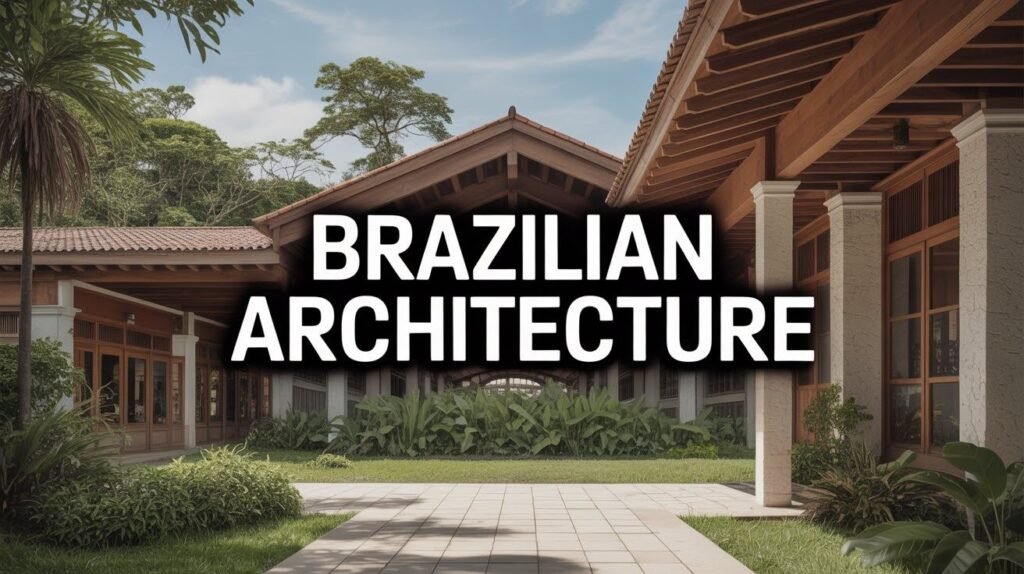Brazil’s architecture tells a story that spans centuries. From ancient indigenous shelters to world-famous modernist buildings, this country has created something truly special.
I want to show you how Brazil’s buildings reflect its complex history. You’ll see Portuguese colonial influence mixed with African creativity and indigenous wisdom. Then came the bold modernist movement that put Brazil on the world architectural map.
Architecture shapes how people live, work, and connect. Brazilian buildings do more than provide shelter, they celebrate culture, respond to climate, and inspire communities.
It’s the way builders learned to work with extreme heat, heavy rains, and diverse cultural traditions. This created solutions you won’t find anywhere else.
In this guide, you’ll learn about major architectural styles that define Brazil. I’ll share the global and local influences that shaped these designs.
Let’s start this visual tour of Brazilian architecture.
A Brief History of Brazilian Architecture
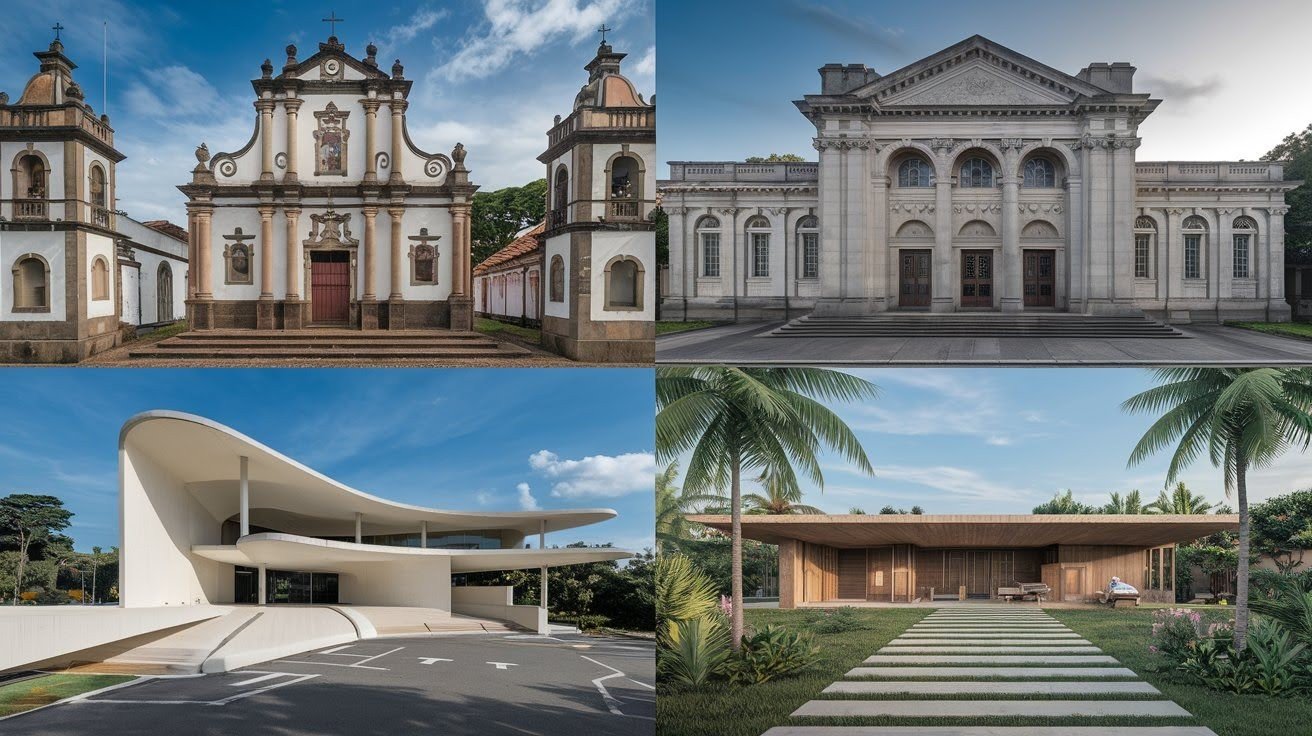
Pre-Colonial Foundations
Before European contact, indigenous peoples built smart shelters. They used local materials like wood, clay, and palm leaves. These structures worked perfectly with Brazil’s tropical climate.
Portuguese Colonial Period
Portuguese colonizers brought European building traditions. They built churches, forts, and planned cities. But something interesting happened-local materials and climate forced changes.
Portuguese builders used:
- Red clay roof tiles
- Thick stone walls
- Internal courtyards for cooling
- Ornate baroque decorations
20th Century Modernization
Everything changed in the 1900s. Brazil wanted to modernize rapidly. Young architects looked to Europe for inspiration but created something distinctly Brazilian.
Oscar Niemeyer led this revolution. He proved Brazilian architects could innovate on a global scale.
Contemporary Movements
Today’s Brazilian architects continue pushing boundaries. They blend traditional wisdom with cutting-edge technology. Sustainability and social responsibility guide modern projects.
Key Architectural Styles in Brazil
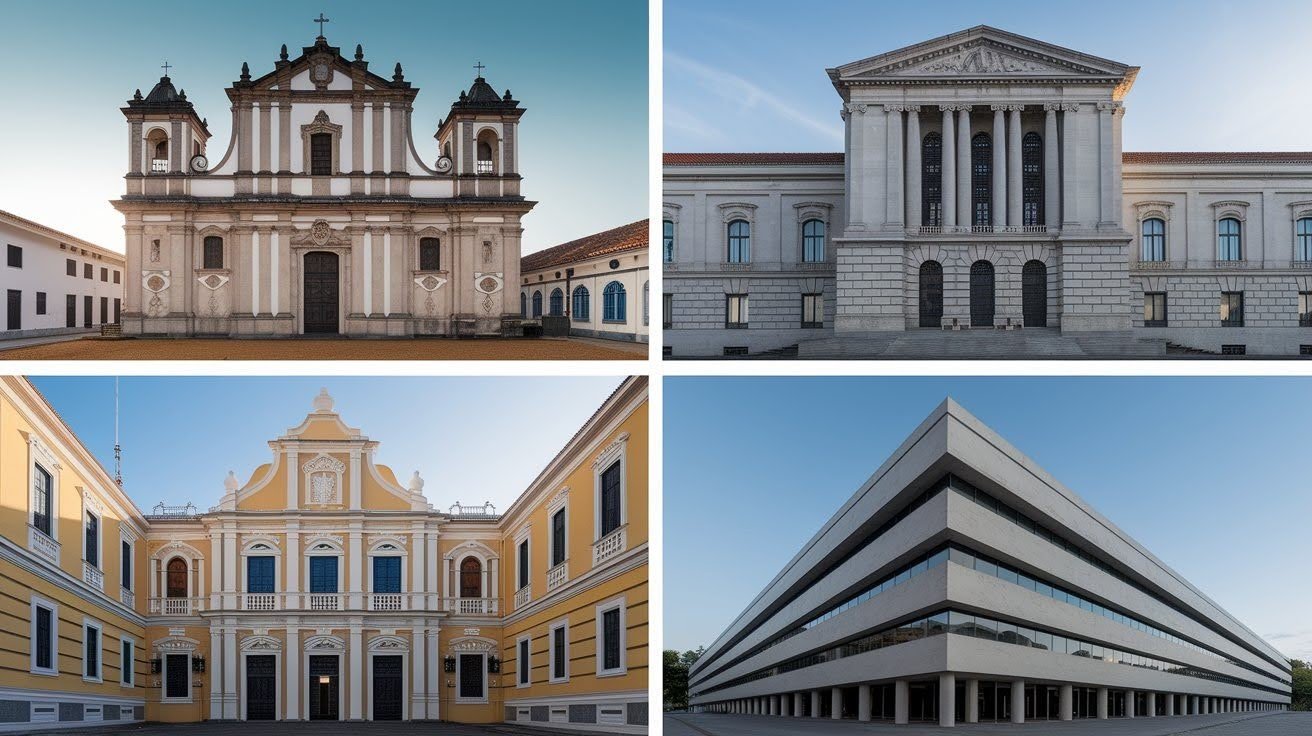
Colonial Architecture
Colonial buildings dominated Brazil for three centuries. These structures show Portuguese influence adapted to tropical conditions.
Key Features:
- Baroque ornamentation on church facades
- Red tile roofs that shed heavy rain
- Symmetrical layouts around courtyards
- Thick walls for cooling
Example: São Francisco Church in Salvador amazes visitors with its gold-covered interior and intricate stone carving.
Neoclassical and Eclectic Styles
The late 1800s brought European fashion to Brazil. Wealthy cities wanted buildings that looked like Paris or Vienna.
This created the Eclectic period-mixing different historical styles in one building.
Example: Theatro Municipal in Rio de Janeiro combines French and Italian influences. Its grand dome and ornate interior rival European opera houses.
Modernist Architecture
Brazilian Modernism exploded in the 1940s and 1950s. This movement put Brazil on the world architecture map.
Key Features:
- Clean, geometric lines
- Open floor plans
- Bold concrete forms
- Integration with landscape
- Lots of natural light
Leaders: Oscar Niemeyer and Lúcio Costa transformed how people thought about buildings.
Example: Brasília’s civic buildings show modernist principles at city scale.
Contemporary & Sustainable Design
Today’s Brazilian architects focus on environmental responsibility. They use local materials, design for natural ventilation, and create buildings that breathe.
This new generation respects traditional knowledge while embracing innovation.
Major Influences on Brazilian Architecture
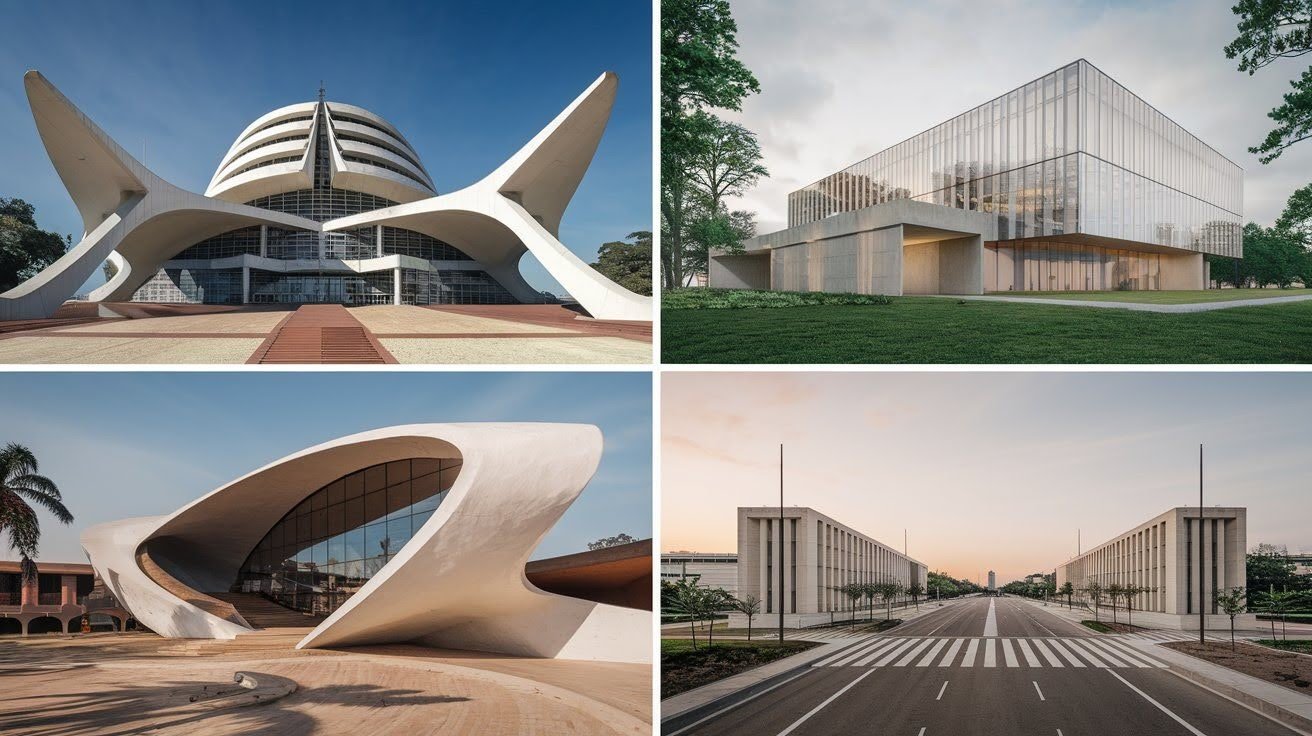
Portuguese Colonial Legacy: Portuguese settlers brought European building traditions. But Brazil’s climate and materials forced adaptations.
A hybrid style that worked better than pure European designs.
Indigenous and African Cultural Inputs: Indigenous peoples contributed practical knowledge about local materials and climate response. African enslaved populations brought construction techniques and decorative traditions.
These influences created Brazil’s unique architectural DNA.
Modernist Movements: European modernism inspired Brazilian architects. But they didn’t copy. Brazilian modernists created something new: tropical modernism that celebrated light, air, and landscape.
Tropical Climate and Geography: Brazil’s hot, humid climate shapes every building decision. Architects learned to create cross-ventilation, use overhangs for shade, and build with materials that handle moisture.
Socio-Political Dynamics: Different eras brought different architectural priorities. Colonial buildings showed Portuguese power. Modernist structures expressed national ambition. Today’s buildings reflect environmental and social consciousness.
Must-See Architectural Landmarks in Brazil
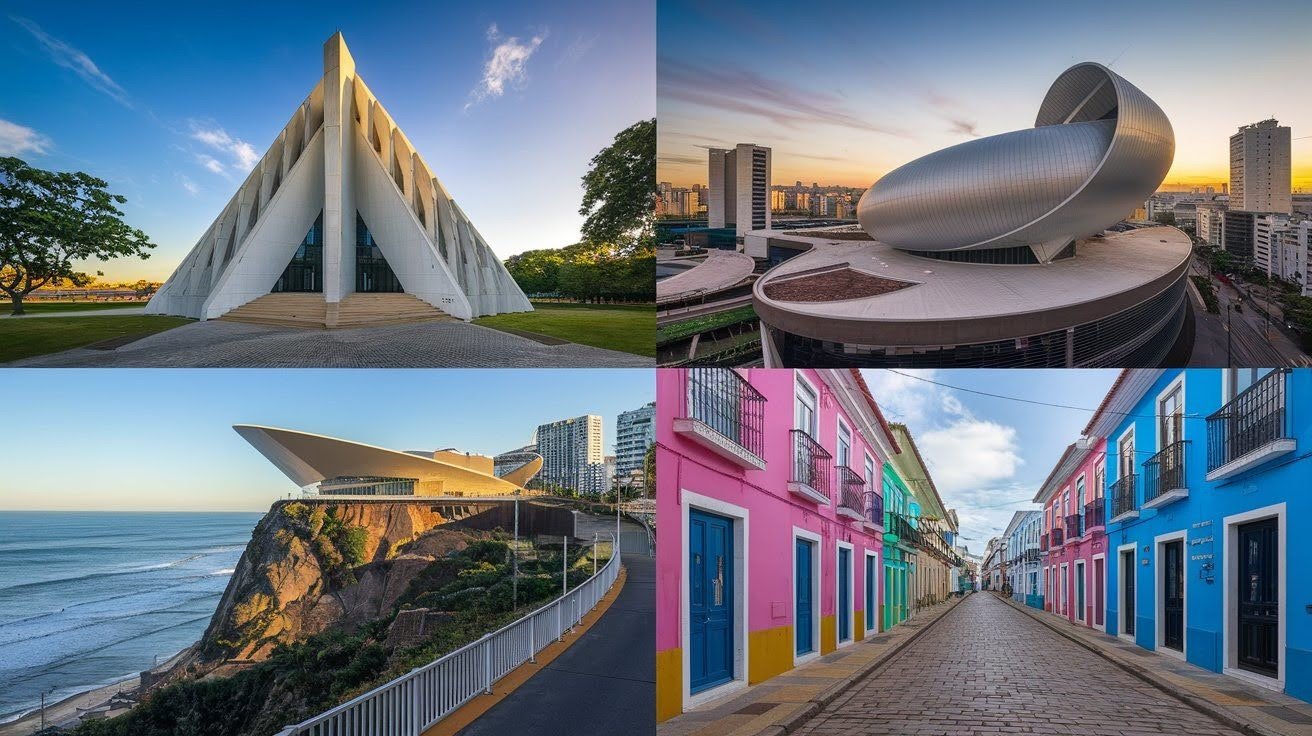
Brasília
Brasília is a UNESCO World Heritage Site. Brazil’s planned capital showcases modernist vision at city scale. Built in just four years, Brasília proved architecture could transform society.
Must-See Buildings:
- Cathedral of Brasília: Sixteen curved columns create a crown-like structure
- Palácio da Alvorada: The president’s residence floats above reflecting pools
- National Congress: Two towers and two domes create an iconic skyline
São Paulo
This massive city mixes architectural periods in fascinating ways.
Highlights:
- Copan Building: Oscar Niemeyer’s serpentine residential tower
- Museum of Art (MASP): Suspended over a public plaza on red pillars
Rio de Janeiro
Rio combines natural beauty with architectural innovation.
Key Sites:
- Niterói Contemporary Art Museum: UFO-like structure by Oscar Niemeyer
- Christ the Redeemer: Art Deco masterpiece crowning Corcovado mountain
Salvador
Brazil’s first capital preserves the largest colonial urban center in the Americas.
Historic District: Pelourinho’s cobblestone streets and colorful facades transport visitors to colonial Brazil.
Inhotim
This contemporary art center shows how architecture can enhance landscape rather than dominate it.
Buildings emerge from gardens, creating seamless indoor-outdoor experiences.
Brazilian Architects Who Shaped the Nation
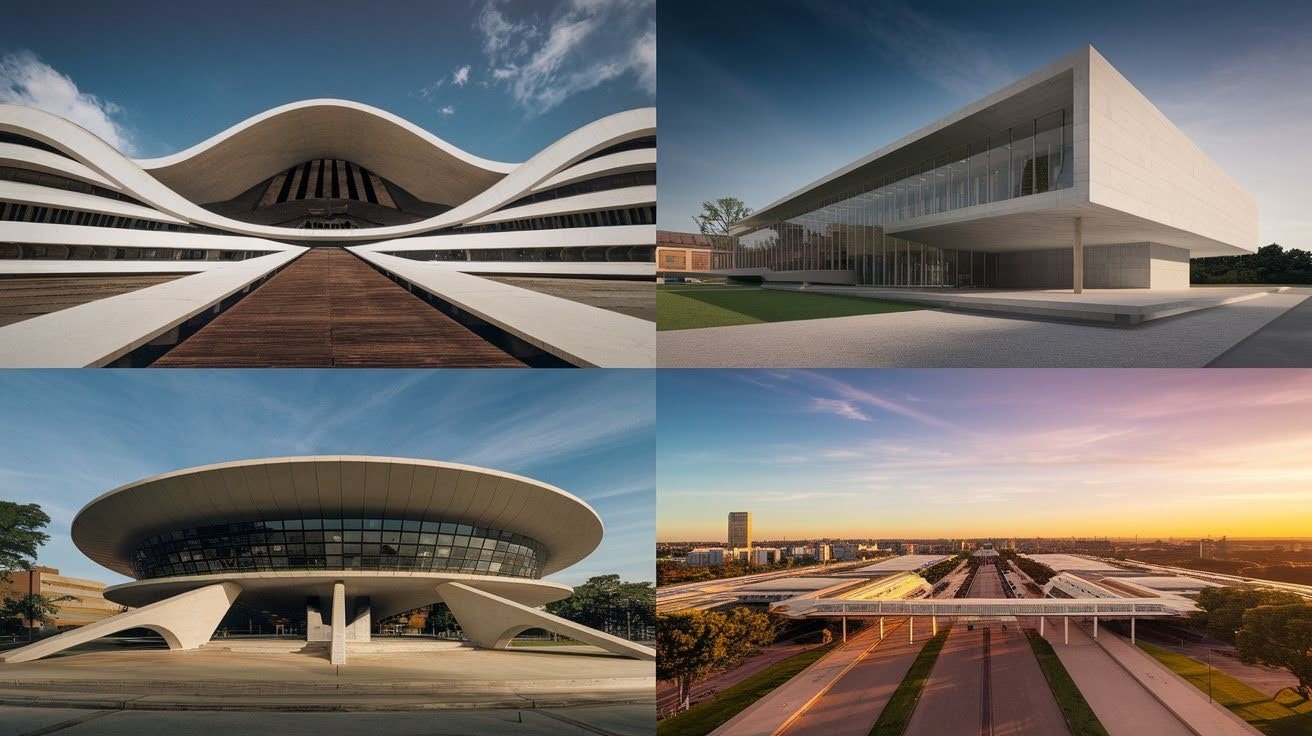
Oscar Niemeyer – The Face of Brazilian Modernism
Niemeyer designed buildings that seemed to defy gravity. His curved concrete structures became symbols of Brazilian creativity.
Philosophy: Architecture should surprise and delight.
Legacy: Over 600 buildings worldwide, including the UN headquarters in New York.
Lina Bo Bardi – Modernism with Social Values
This Italian-Brazilian architect believed buildings should serve communities, not just look beautiful.
Key Work: São Paulo Art Museum hangs over a public plaza, creating space for gatherings.
Lúcio Costa – Planner of Brasília
Costa designed the master plan for Brazil’s new capital. His airplane-shaped layout organized an entire city around modernist principles.
Innovation: Separating cars from pedestrians through different levels and pathways.
Paulo Mendes da Rocha – Brutalist with Civic Impact
This architect created powerful concrete buildings that enhanced public life.
Approach: Buildings should be generous to their surroundings and users.
Brazilian Design Today: Trends and Innovations
Sustainable Urban Housing: Brazilian designers now prioritize environmental performance. New housing projects use passive cooling, rainwater collection, and local materials.
Revitalization of Historic Buildings: Instead of demolishing old structures, designers adapt them for modern uses. This preserves cultural heritage while meeting contemporary needs.
Bioclimatic and Nature-Integrated Design: Buildings now work with natural systems. Green roofs, living walls, and natural ventilation reduce energy use while improving comfort.
Brazilian Designers on the Global Stage: Contemporary Brazilian designers win international awards and design buildings worldwide. They export tropical modernism’s lessons about climate-responsive design.
Conclusion
Brazil’s architecture reflects the country’s complex identity. You’ve seen how indigenous wisdom, colonial influence, and modernist innovation created something unique.
From Salvador’s baroque churches to Brasília’s futuristic civic buildings, Brazilian architecture tells stories of adaptation and creativity. Each style responds to local conditions while expressing cultural values.
Today’s designers continue this tradition. They blend sustainability with beauty, community needs with individual expression. Brazilian buildings prove that design can be both functional and inspiring.
The lessons from Brazilian building design extend beyond construction. They show how different cultures can work together to create something greater than the sum of their parts.
I encourage you to visit Brazil and experience these architectural wonders firsthand. Photos can’t capture the feeling of standing under Niemeyer’s soaring concrete curves or walking through Salvador’s colonial streets.
Brazilian building design offers lessons for our shared future
Frequently Asked Questions
What makes Brazilian architecture unique?
Brazilian architecture combines Portuguese colonial traditions with indigenous building wisdom and African influences. The tropical climate forced adaptations that created a distinctive style. Modern Brazilian architects like Oscar Niemeyer then developed tropical modernism, clean lines and bold forms designed for hot, humid conditions.
Who is the most famous Brazilian architect?
Oscar Niemeyer is Brazil’s most internationally recognized architect. He designed Brasília’s major buildings, the UN headquarters in New York, and over 600 structures worldwide. His curved concrete buildings became symbols of Brazilian modernism and influenced architects globally.
Why is Brasília important for architecture?
Brasília represents the largest modernist city ever built. Constructed in just four years (1956-1960), it shows how architecture can organize entire communities. The city’s buildings, designed by Oscar Niemeyer with urban planning by Lúcio Costa, earned UNESCO World Heritage status.
How does climate influence Brazilian architecture?
Brazil’s hot, humid climate shapes every design decision. Traditional buildings use thick walls, internal courtyards, and red tile roofs for cooling. Modern architects create cross-ventilation, deep overhangs for shade, and open floor plans.
What are the best architectural sites to visit in Brazil?
Start with Brasília for modernist masterpieces, then visit Salvador’s Pelourinho district for colonial architecture. São Paulo offers the Copan Building and MASP museum. Rio de Janeiro features Niemeyer Niterói Contemporary Art Museum.


